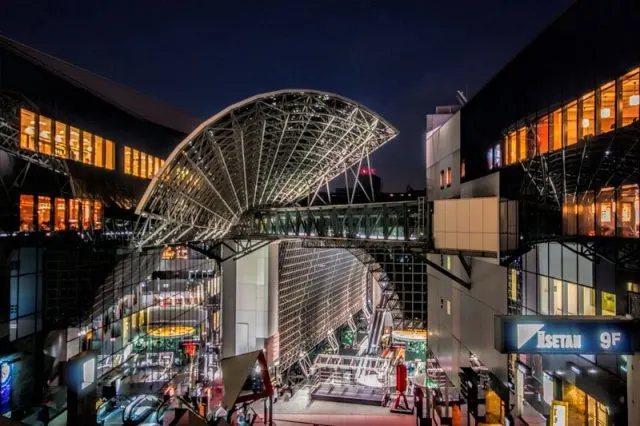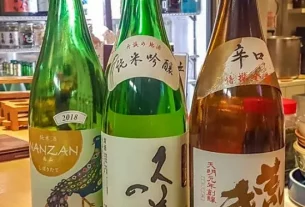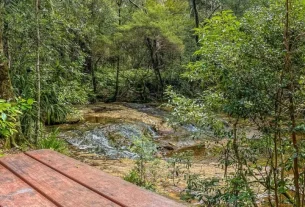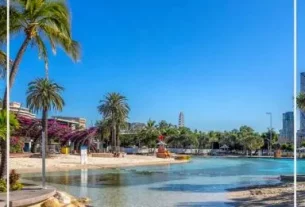Kyoto is a beautiful city to visit but it can get expensive. Here are our top 10 picks of fun and free things to do in Kyoto that you won’t want to miss.
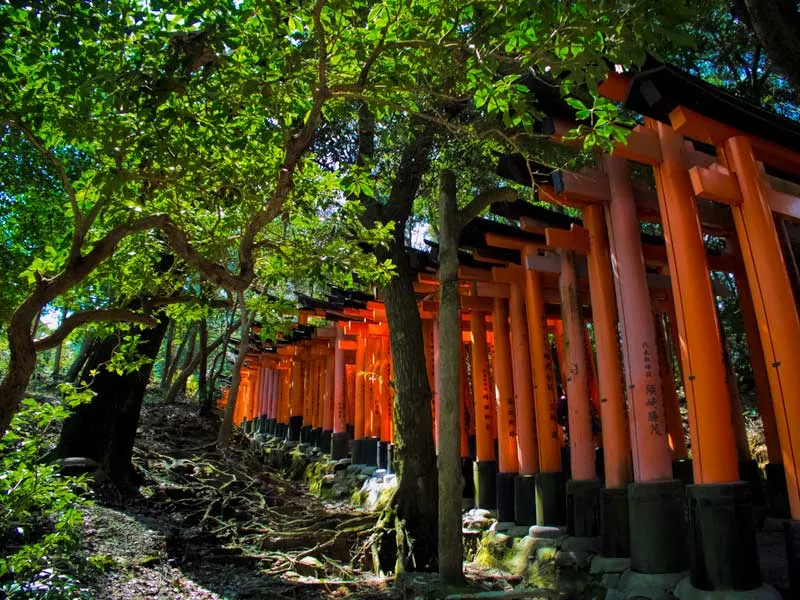
Did you know there are some great fun and free things to do in Kyoto city? I heard so many times as I was planning our trips to Japan what a terribly expensive place it was to visit. I’d be the first to agree that Japan is not a budget traveller’s dream. On the other hand, it’s not nearly as expensive as I’d expected it to be from the hype and fear-mongering. It is possible to fully experience Japan’s unique culture, foodie delights and landscape without totally destroying your travel budget.
What did surprise me though is that there are things you can do in Japan’s biggest tourist destinations and cities that don’t cost a cent. Of course, you don’t want to build your travel around doing only free stuff because you’ll miss some wonderful experiences but when there are really good bargains on offer you don’t want to overlook them either.
So if you’re pondering what to see and do in Kyoto then read on. These 10 ideas are fabulous and fun options. Most are centrally located in the city or not far from it so you won’t have any significant transport costs getting between them either.
Table of Contents
Our top 10 fun (and free) things to do in Kyoto
Fushimi Inari
This is the head shrine of Inari and even if you are only going to visit a couple of Shinto shrines across Japan this one should be on your list. It’s in southern Kyoto and a 5-minute train ride from Kyoto station.
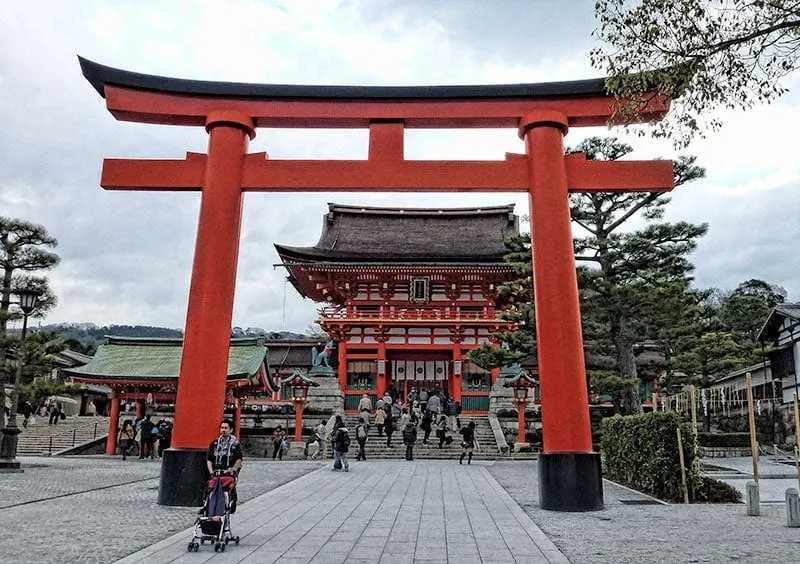
The shrine itself is quite large and a good example of the Shinto design but what’s unique about it is all the vermillion tori gates. Most shrines have a couple, especially at the entrance and leading up to the entrance but there are corridors of these gates that weave through the shrine itself and then right up Inari mountain behind it.
Not only is the walk up the mountain interesting and something quite different with all these torii but the view from the top of the mountain over Kyoto on a clear day is worth the climb alone.
As an important shrine in Kyoto, Fushimi Inari also hosts a variety of events during the year such as Kenka sai which we were able to attend in the spring. If you time it right you might also catch services or even a Shinto wedding in progress.
Entry to Fushimi Inari like all Shinto shrines is free and it’s open 24/7.
Kimono fashion parade and silk weaving
I find the kimono one of the most striking forms of traditional dress which is probably why some Japanese women will still choose to wear it today, at least for special occasions.

You’ll see kimonos and yukata worn in Kyoto, especially during the cherry blossom, autumn foliage and other festival times. The Nishijin textile centre gives you an opportunity to see a kimono styled and worn in a kimono fashion parade several times a day.
The show is free to attend and you also have the opportunity to see a display of silkworms that produce luxurious fabric and weaving demonstrations that show how some of the more elaborate fabrics and wall hangings are created.
The Nishijin Textile Centre is about 1 km from the Imperial Palace or 1.5 km from Nijo Castle so is quite easy to incorporate it with other activities you might be planning in the city.
Nishiki market
This 400-year-old traditional food market is built on a stone-paved lane above Kyoto’s groundwater spring system. There are over 100 small stalls, shops and restaurants to explore along this 400-metre alleyway. Many of the store owners welcome browsing and may offer you samples of some of the unique local cuisine as you wander through.
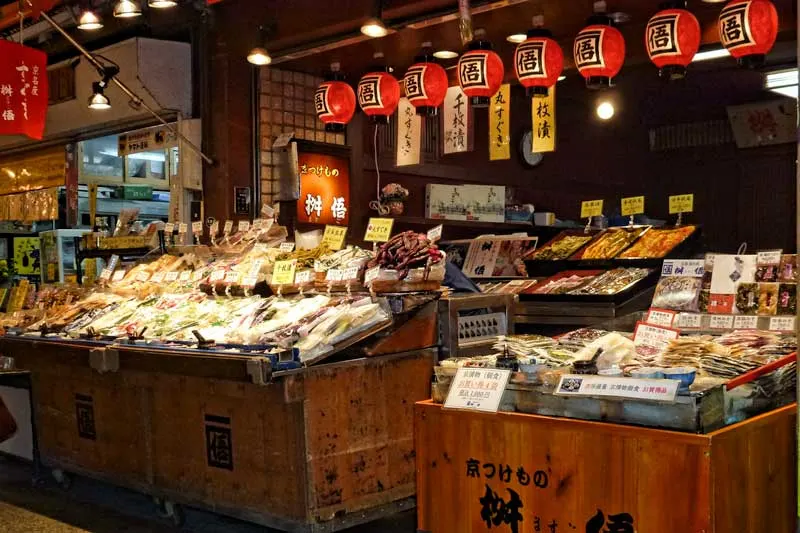
At the eastern end is the Nishiki Hachiman-gu shrine which marks the centre of old Kyoto.
Read more about our wanderings through Nishiki market, some of the things to keep an eye out for and our top tips for visitors wanting to get the most out of the experience.
Gion evening walk
One of the highlights of spending time in this beautiful city is taking a walk through the historic Hanamachi before or after dinner. Hanamachi are the districts where geisha live and work and the traditional buildings in these parts of the city have been maintained over the centuries.

Just to be clear I’m not for a moment suggesting you go stalking geisha as they go about their business. Kyoto is a very safe city for walking and these dimly lit old streets are a lovely evening walk with the bonus that you might spot a geisha as they move between the okiya (geisha houses) and the restaurants and ochaya (tea rooms) where they entertain. It’s like a momentary step back in time.
These women not only possess talent in the arts of dance and music but great poise as they move rapidly from one engagement to another in their stunning but heavy kimono and tall geta (shoes). If you are lucky enough to pass them in the street respect them and don’t crowd them or delay them. When they’re out and about in full makeup they are generally on their way to work.
You’ll find more information on Kyoto’s 5 geisha districts in this post.
Philosophers path
This historical stone path runs along the banks of a small section of the Lake Biwa canal below Kyoto’s eastern hills. The walkway is best known as a cherry blossom viewing site but it’s a calm and attractive spot in all seasons. As you stroll along the 2 km length there are a variety of restaurants, shops, cafes and temples to explore.
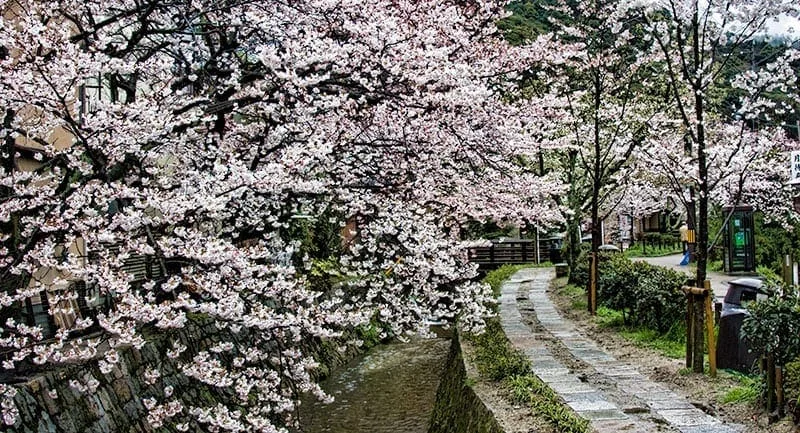
Read more about the attractions along the Philosopher Path in this article from our spring visits.
Imperial palace tour
The Imperial Palace in Kyoto was home to the emperor of Japan during the Heian period and this impressive palace and gardens remain from that time. On our first visit here we booked the (free) guided English tour but you can go through without a guide if you prefer or your timing doesn’t work out.

This one is definitely worth an hour or so of your time either on the tour or to wander through on your own for the architecture, history and beautiful garden. The scale is dramatic. If you’ve done the Tokyo imperial palace tour and it wasn’t really your thing don’t be put off, the Kyoto site is very different.
Yasaka shrine
With Fushimi Inari already on the list I contemplated not adding a second shrine but I do love Yasaka and think it deserves its place. It’s located in the Gion district and is sometimes referred to as Gion Shrine, an indication of its close link with the geisha from the nearby hanamachi.
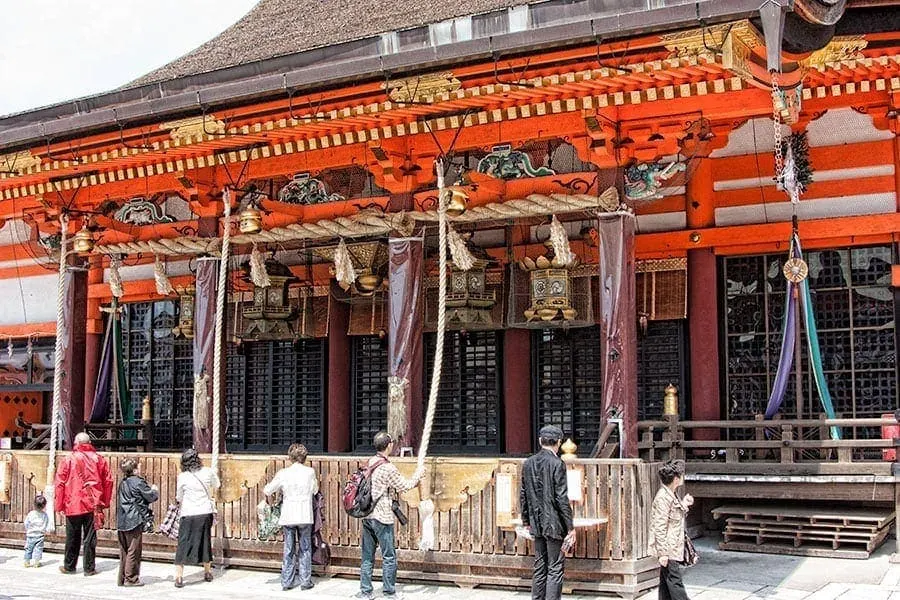
Yasaka shrine is one of the few places I’ve seen geisha perform at a local event and the shrine is heavily involved in many celebrations and festivals. It’s the place to be in Kyoto for New Year and it’s the host shrine to the popular Gion Matsuri, Kyoto’s biggest festival.
Maruyama park
Maruyama Park is considered a fairly new park in the context of Kyoto’s long history. Only 300 years ago it was a piece of wasteland overrun with weeds until it was designated as a park in 1886. It was made over into its current design by Jihai Ogawa, a landscape gardener known for his other prestigious garden designs around the city including the Heian shrine. It’s a traditional style park with walk paths, ponds, decorative bridges and statues.
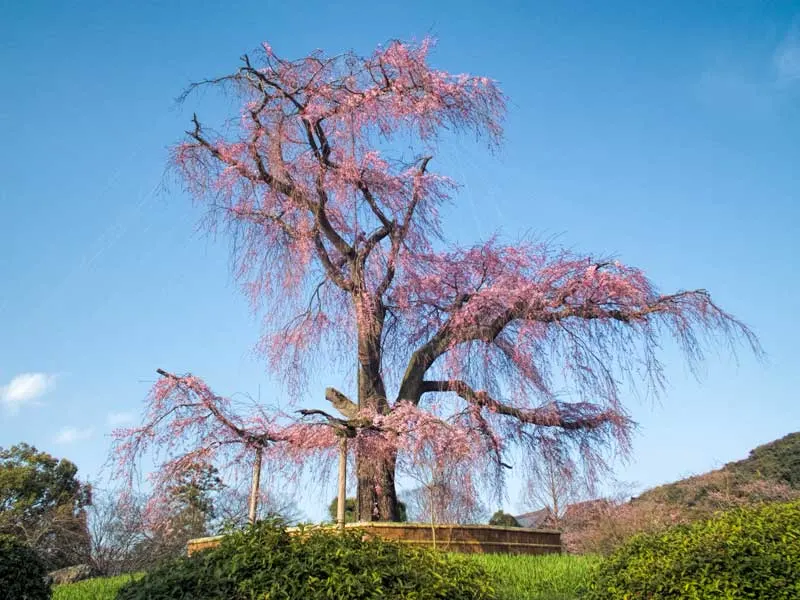
The park is possibly best known as Kyoto’s premier hanami party spot during the cherry blossom season, the celebration known as Gion-no-Yozakura brings out many locals to eat and drink under the cherry trees. It does get a bit rowdy by Kyoto standards but I’ve never felt unsafe.
A large weeping cherry tree (Shidarezakura) is in the centre of the park and is a stunning display in season. The current tree is a second-generation tree planted in 1949. It was seeded from the original tree that lived to be 200 years old with a trunk 4 meters around its base and was featured in many famous old paintings.
The park is located in Gion in central Kyoto, directly behind the Yasaka shrine. There are several entrances into the park and it’s a pretty green space all year round. During festivals, it’s transformed with yatai, the small portable food carts that appear and produce incredibly tasty treats from their small size.
Festivals and events
There are also many free events in the city throughout the year. Festivals and events give the opportunity to see a bit of the local community and way of life too. We’ve managed to find something exciting happening during each visit but some of the highlights to watch out for when you visit are the Gion, Aoi and Jidai Festivals, New Year celebrations, Setsubun and of course the seasonal events.
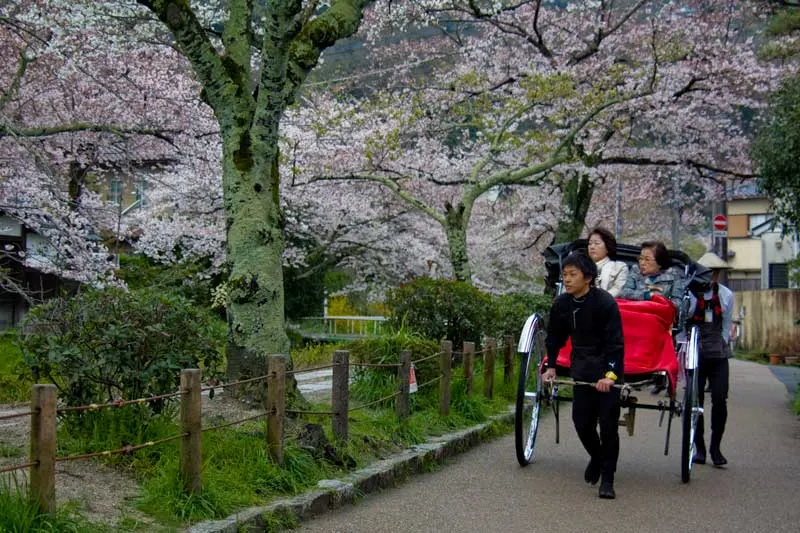
Sakura season, the cherry blossom is a fabulous time to be in Japan and Kyoto is one of the best cities for it in our opinion. There are trees in bloom and paths and rivers carpeted in pink petals all around the city. We particularly like the hanami parties in Maruyama Park and along the riverbank, or the walk to dinner along the canals area near Pontocho and Shirakawa, both historical geisha districts in the central city.
Take a look at this page for our suggestions on the best sakura viewing spots in Kyoto, many of them are free. Another great free event is the dragon making its rare but highly anticipated appearance at Kiyomizudera temple.
Kyoto station
Now I know a train station doesn’t sound like an enticing and fun destination but give it a chance. Firstly it’s a really unique and somewhat controversial building being an ultra-modern gateway to a city that prides itself on its history and tradition.
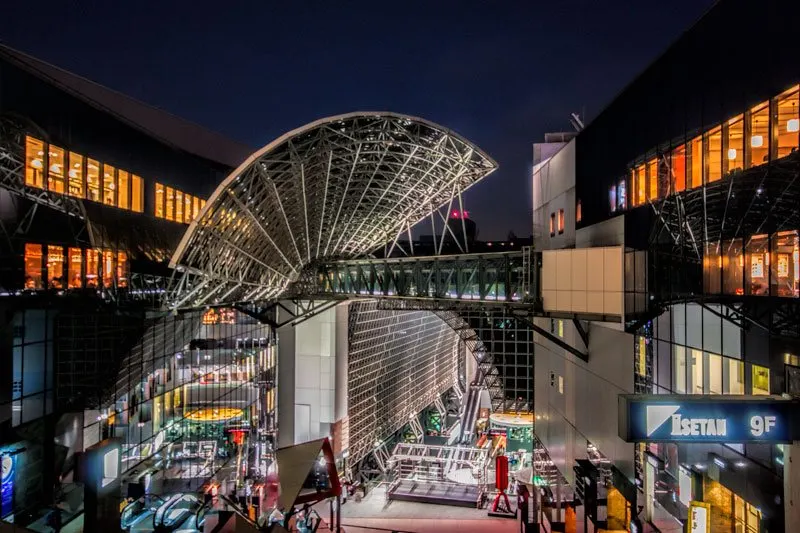
While you are there ride the escalators and climb the final flights of stairs to the top for great views out over Kyoto. From the 11th floor access the skywalk floating above the station below for more great views, this is especially good in the evening.
There is a sky garden on level 15 and various other surprisingly quiet public spaces for relaxing on level 11. The fountain and stairs are usually lit up in the evenings often with themed displays and there is no end to the browsing and eating opportunities directly accessed from the station.
You can read more about Kyoto station, the starting point for our eastern Kyoto self guided walking tour in this post.
Looking for a little more inspiration for your trip?
So there you have it, 10 fun and absolutely free things to do in Kyoto, some fabulous additions to any itinerary. Have you spent time in Kyoto? Which of the places and activities is your favourite or do you have others to add? Please share your own experiences in the comments below.
